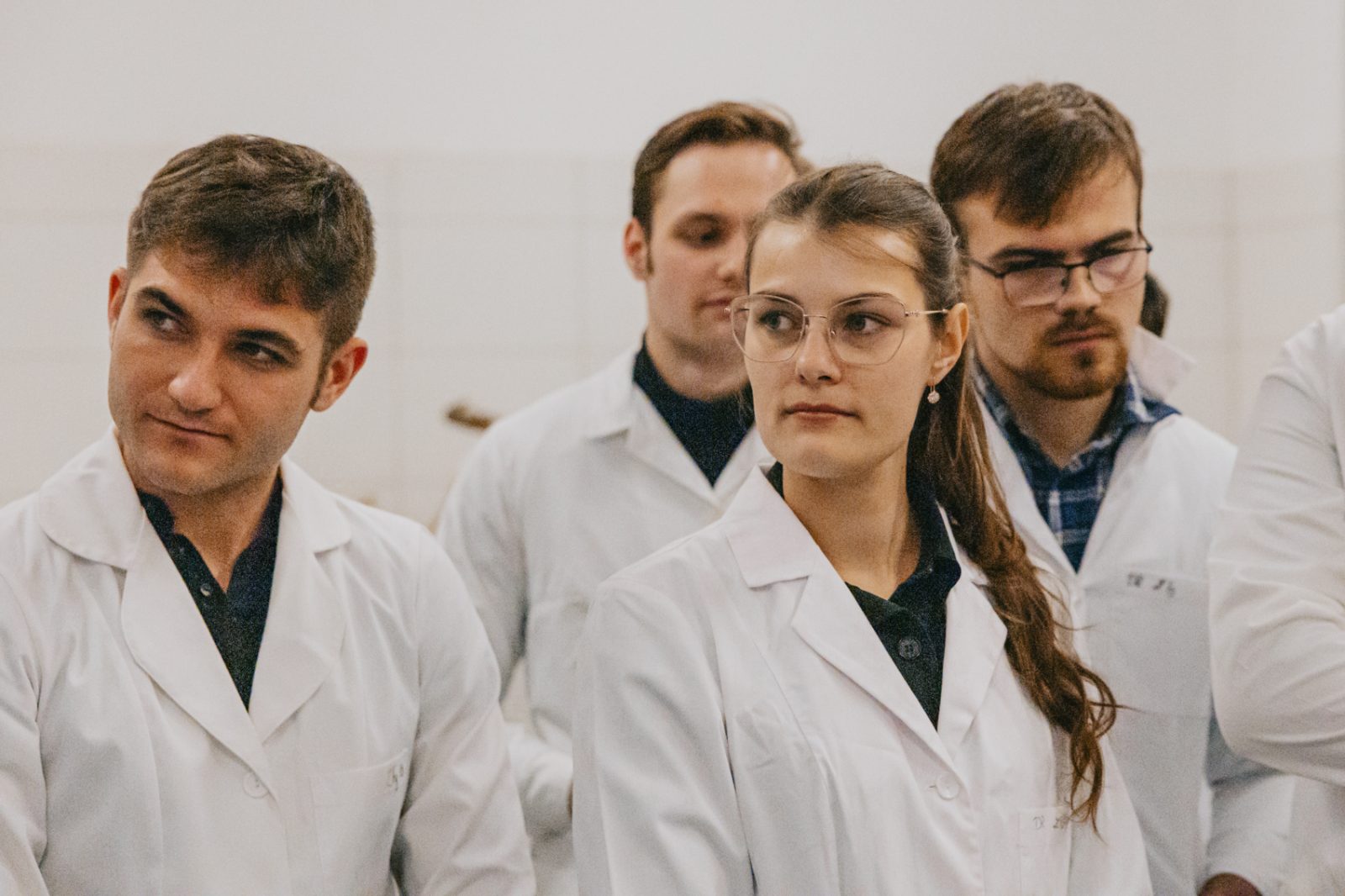
Historical reconstructions at the University of Wrocław
Wednesday evening. The dissecting room. Where else but here is the best place to learn about anatomy?
Our students and doctoral students attended a special educational workshop on the history of anatomy by candlelight. In the dissecting room at the University of Life Sciences, they had the opportunity to actually participate in an attempt to recreate a modern lesson in animal anatomy.
The workshop was preceded by a lecture on the history of anatomy by dr Katarzyna Pękacka-Falkowska from the Poznan University of Medical Sciences.
Animal section. But why by candlelight? – We see colours differently in fluorescent light and differently in candlelight. Poor visibility, but also different techniques and tools and a completely different state of knowledge meant that the perception of the phenomena observed at the time was significantly different from ours. – says dr Jakub Węglorz, a historian from the UWr.
The great importance of practical skills in past surgery limited the theoretical description of the procedures carried out and the knowledge available.
As dr Węglorz says: The teaching of surgery took place under conditions that are difficult to imagine from our perspective, so in order to learn and understand the former treatment in its real form, it is necessary to undertake reconstructive activities.
For the skilled hands of prof. Piotr Kuropka, dr Anna Lipińska and the veterinary students assisting them, the poor lighting did not, at first glance, make much difference. Although, in many cases, colour, or rather shades of red, play a key role in dissections. For them, from the point of view of an expert in animal anatomy, it was also a scientifically interesting experience.
Experiencing the conditions under which modern surgeons worked, juxtaposed with the old state of knowledge and the range of activities undertaken, allows the body and its secrets to be observed on a similar level to scholars in the past.
The workshop attempted to demonstrate ancient preparative methods and the creation of educational anatomical preparations from beeswax. Thanks to the cooperation with dr Danuta Raj from the Department of Pharmacognosy and Herbal Medicines at the Piastów Śląskich Medical University in Wrocław, it was possible to use natural dyes to obtain waxes with colours corresponding to old preparations.
Such initiatives demonstrate the need for an interdisciplinary approach and the necessity for cooperation between researchers working in seemingly different fields of science. – dr Węglorz believes. – In this way, participants broaden their mental horizons and acquire practical skills that will be helpful in further scientific research.
The realised workshop was an opportunity to involve students in ongoing research and introduce them to a recreated piece of past reality. In addition to popularising knowledge of ancient medicine, it was also an opportunity to involve students in the latest research techniques and to participate in a scientific project led by renowned researchers.
This is the next but not the last scientific experiment of our researchers. The previous one involved the reconstitution of an ancient drug (https://uwr.edu.pl/dotknac-przeszlosc-rzecz-o-historycznych-rekonstrukcjach/) .
More about the next remarkable workshop coming soon.
The workshop was led by:
dr hab. prof. UP Piotr Kuropka (University of Life Sciences in Wrocław)
dr Anna Lipińska (University of Life Sciences in Wrocław)
dr Katarzyna Pękacka-Falkowska (Karol Marcinkowski University of Medical Sciences in Poznań)
dr Danuta Raj (Medical University of Piastów Śląskich in Wrocław)
dr Jakub Węglorz (University of Wrocław)
complied by Katarzyna Górowicz-Maćkiewicz



















